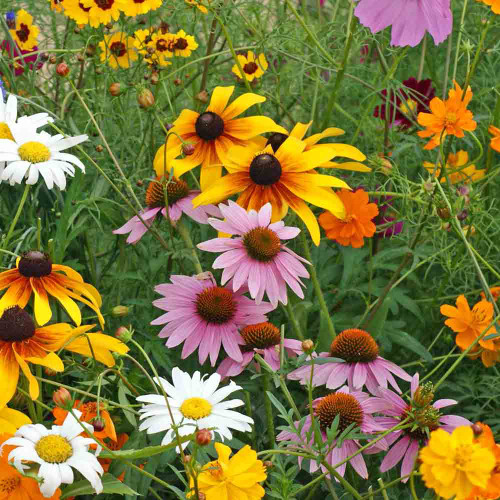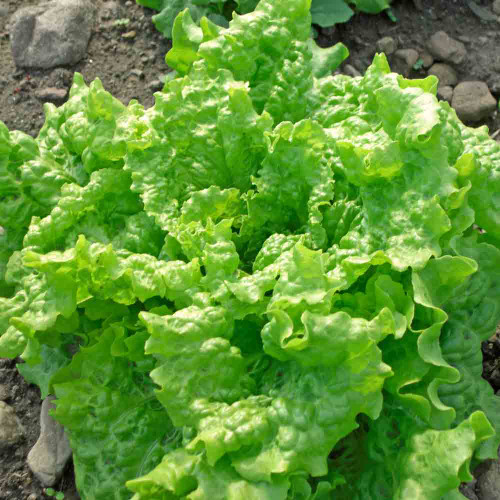Description
Joe Pye Weed - The Legendary Reliable Native Perennial
In the late 18th century, a respected Mohican leader in New England shared his deep knowledge of plant medicine with his community and settlers alike. His skill was so profound that, over time, his name became inseparable from one particular plant, his legacy eventually shrouded in folklore about curing deadly fevers.
The plant at the center of this story is a towering native perennial, a stately presence in the late-season garden. Its sturdy, purple-spotted stems rise up to seven feet, topped by broad, flat-topped clusters of mauve-pink flowers. These blooms become a crucial late-season banquet for Monarchs and Swallowtails, while their powerful roots work unseen, breaking up compacted earth.
This living piece of Native American history—a plant that builds soil and sustains pollinators—carries the name of the man whose legacy it honors: Joe Pye Weed.
Details
Joe Pye Weed (Eutrochium maculatum) is a stately, architectural native perennial that brings both height and significant ecological value to the garden. It is a robust, clump-forming plant that typically reaches 4 to 7 feet tall and spreads 2 to 4 feet wide. Its sturdy, upright stems display distinctive purple or reddish-purple spots. The deep green, lance-shaped leaves grow in whorls of three to five around the stem, providing a leafy backdrop for the main event: large, flat-topped clusters of tiny, mauve-pink flowers that bloom from late July through September.
The flower heads get their signature soft, fuzzy look from the long, thread-like styles that protrude from each tiny blossom, reaching out to catch pollen. As the flowers fade in autumn, they give way to attractive, tan-colored seed heads that persist on the sturdy stems well into winter, providing texture to the dormant garden and a vital food source for birds.
History
The story of Joe Pye Weed is a fascinating example of how authentic history can become entangled with folklore. For generations, folklore attributed the name to a mythical Native American healer who used the plant to treat typhus fever. The verifiable history, however, is more compelling and connects the plant to a real person.
Extensive research traces the name to Joseph Shauquethqueat (1722-1809), a respected Mohican sachem (community leader) and healer who lived in western Massachusetts. Shauquethqueat, whose first name was often anglicized as "Joe Pye," was known for his skilled use of traditional plant-based remedies, which he shared with his community and European-American neighbors. While the dramatic claim of curing typhus is likely an embellishment, it is his real-world legacy as a respected community leader and herbalist that is honored in the plant's common name. Growing this plant today acknowledges an authentic piece of North American history and the deep tradition of indigenous botanical knowledge.
Uses
While primarily grown for its ornamental value, Joe Pye Weed's greatest use is its role as a cornerstone of a thriving garden ecosystem. Above ground, its flower clusters provide a high-value nectar source for large butterflies like Monarchs and Swallowtails, and it is a magnet for a wide range of native bees, including at-risk species like the Rusty Patched Bumble Bee (Bombus affinis). This makes it a critical refueling station for insects preparing for winter or migration when many other flowers have ceased blooming.
Below ground, its deep, fibrous root system performs another critical function: it breaks up and aerates compacted soil, improves water infiltration, and helps control erosion. The large, long-lasting flower heads also make a dramatic statement in fresh arrangements. Historically, herbalists made tinctures and infusions from the dried root and flowers to induce sweating and help break fevers, which is the likely origin of the typhus legend.
Companion Planting
Joe Pye Weed's towering height and preference for moist soil make it a perfect "backbone" plant in a native or pollinator garden. It pairs beautifully with other moisture-loving natives like Swamp Milkweed (Asclepias incarnata), which thrives in similar conditions. For textural contrast, consider planting it alongside ornamental grasses that appreciate moisture. Avoid planting it with species that require dry, arid conditions.
Pest and Disease Management
Joe Pye Weed is a famously robust and resilient native plant with few significant pest or disease problems. Deer and rabbits rarely browse its leaves. Occasionally, it may develop powdery mildew in conditions of high humidity and poor air circulation, though this is typically a cosmetic issue. The best prevention is to provide adequate spacing between plants to encourage good airflow.
Planting and Growing Tips
Joe Pye Weed performs best in a location that receives full sun to light partial shade. Its native habitat is moist meadows, making it the perfect solution for those perpetually damp spots in the garden where other plants might struggle. It thrives in rich, moisture-retentive soil but is remarkably adaptable and grows happily in heavy clay, rich loam, or even sandy soils, provided that adequate moisture is available. Uniquely, it also tolerates both salty conditions and the juglone compound exuded by Black Walnut trees. While native to the moist East, its toughness makes it an excellent choice for Western gardeners looking to restore compacted soils, provided it is given regular irrigation.
For best results, the seeds require a period of cold, moist stratification. Sow the seeds outdoors in the fall and let winter do the work for you, or stratify them in the refrigerator for 30 to 60 days before planting in the spring. Sow seeds on the soil surface, as they need light to germinate.
Learn More
From the soil to the seed to the food you eat - we'll help you grow your best garden!



















